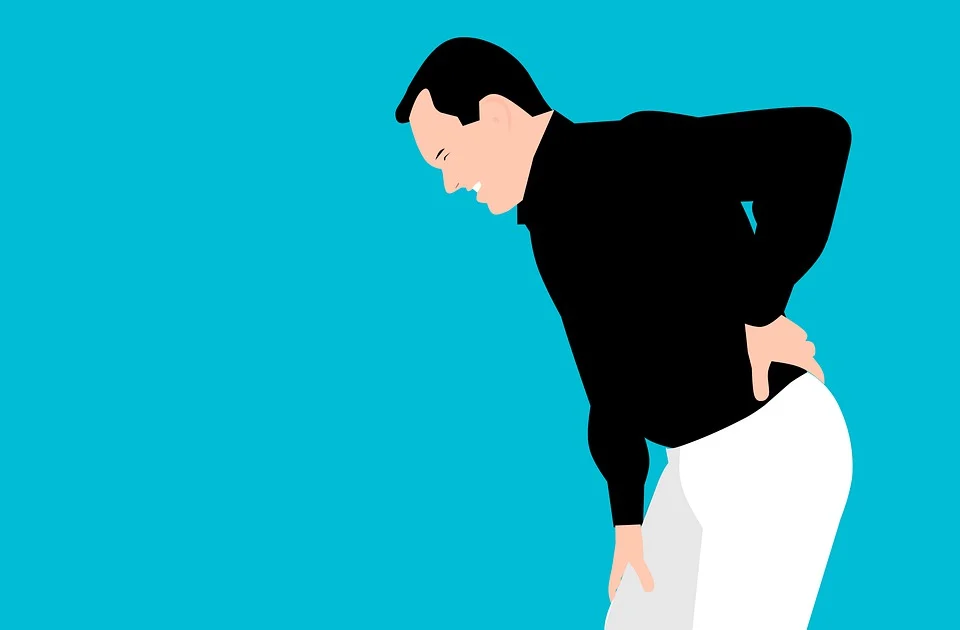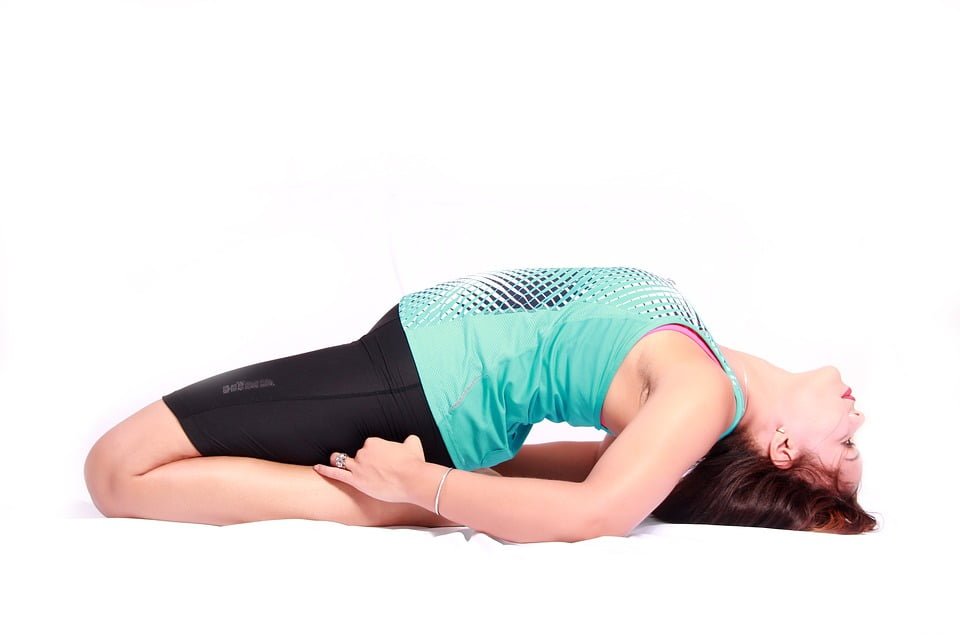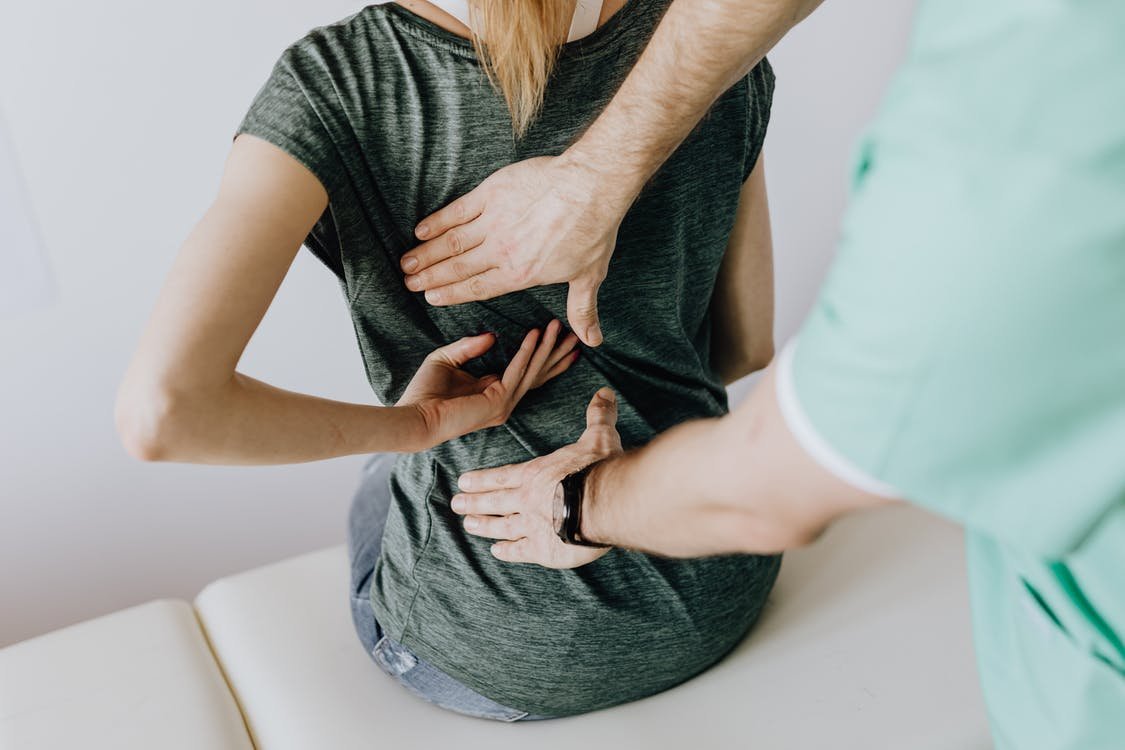How can lower back pain be relieved at home or with pain medicines, especially OTC pain medicines?
It is important to know when you should immediately consult a doctor and not treat your back pain at home or delay seeking help.
To relieve lower back pain, it is important to know the type of pain. It may be acute pain, chronic pain, or subacute pain, meaning the pain is new-onset, or the pain has been there for some time.
Lower back pain mostly occurs in people who sit for prolonged periods or manual workers who lift heavy objects.
Individuals between 30 and 50 are the most vulnerable ones in society. However, older individuals may have medical conditions that can result in lower back pain.
What is causing your back pain?
Lower back pain is one of the most painful conditions of the body. It is also one of the most common causes of pain that usually necessitates an ER visit or warrants investigations.
This problem is increasing daily for various reasons, including immobilization of a person, lifting heavy weights, obesity, etc.
It is more common in old age due to weak bones and muscles of the back. Excessive tension on the muscle or muscle spasm is the most common cause of backache, which occurs during the lifting of heavy objects.
Apart from this, coughing or sneezing may be the cause of back pain due to muscle stretching. Back pain is also a symptom of menstruation due to the release of chemical substances from the uterus, the prostaglandins.
Other causes of back pain include arthritis of the joints of the vertebrae, fibromyalgia, spondylitis, spondylosis, etc.
When should you see a doctor for back pain?

The most common reason people seek advice for back pain is because the pain is severe and doesn’t get relieved with local maneuvers, massage, physiotherapy, or OTC pain medicines.
However, other important symptoms, which if delayed may cause significant disability, should be known so as to seek early help.
These danger signs of lower back pain are:
Lower back pain that is present for two or more weeks:
- Any pain that lasts for more than two weeks is not just a simple muscle spasm. It may be because of an underlying sinister problem that has just started showing itself with back pain.
- In older people, it can be due to lumbar spondylosis when bony spurs grow out of the vertebrae and irritate the nerves going out of the spine.
- Osteoporosis is a painless condition but severe osteoporosis may lead to fractures of the vertebrae which then become painful.
- In younger adults, it could be due to another systemic disease such as blood cancer, cancer deposits in the spine, sciatica, or infection of the spine.
- In young females, it could be due to pelvic inflammatory disease or fibromyalgia.
Lower back pain with fever:
- Fever is a sign of infection or inflammation. Infections of the spine are common in immunocompromised people such as those with HIV infection.
- Mycobacterial infections of the spine, also called Potts disease, are common in developing countries.
- Patients who develop mycobacterial infections of the spine may notice fever, weight loss, and “Gibbus” formation in the lower back. “Gibbus” is a visible spine deformity or protrusion of the spine.
- Inflammatory spine disease may occur in patients with Ankylosing spondylitis. Ankylosing spondylitis is a disease of young adults associated with marked early morning stiffness and restriction of movements. It may also be associated with arthritis of other joints.
Lower back pain with weight loss:
- Unintentional weight loss in association with lower back pain may occur in patients with chronic infections like mycobacterial infections and cancers.
- Cancer of the spine is usually due to metastatic deposits. Common cancers that spread to the spine include cancers of the lungs, prostate, breast, colon, and kidneys.
- Sometimes inflammatory disease of the spine is also associated with weight loss.
Lower back pain that is more severe at night:
- Osteoporotic fractures of the spine, inflammatory disease of the spine, and cancer spread to the spine are usually associated with pain that is more severe at night.
- Similarly, inflammatory diseases of the spine such as Ankylosing Spondylitis are associated with pain and stiffness that is more marked at rest than when a person is moving.
Lower back pain that radiates to the legs:
- When your pain radiates to your legs, this means that the nerves carrying sensations from the spine to the legs are irritated.
- Pain radiation from the lower back to the spine is usually due to disc prolapse. It is commonly called “Sciatica”.
- Most patients develop sciatica after lifting a heavy object. The pain is usually severe, sharp, and runs like an electric current from the spine to the legs.
- It may also be associated with weakness and numbness of the legs. Patients may complain that their feet are numb.
- Nerve impingement may also affect control over the bladder and bowel. Most patients complain of an inability to pass urine and stools. However, depending on the location of the lesion, it may also be associated with fecal and urinary dribbling and incontinence.
How to relieve lower back pain at home?

As the pain occurs, mnemonic RICE is all you should do at first.
- R of rice is for rest. You should not keep working in pain instead, you should take proper rest in such a situation because working can lead to severe pain in the near future and can damage the structures in the back as well.
- I of rice is for ice. Ice can rescue the affected area from inflammation by constricting the vessels. So the release of chemicals (cytokines) that cause swelling or inflammation will be less than normal and can be useful in relieving pain through this.
- C is for compression. It can relieve the pain by decreasing inflammation and increasing blood flow.
- E is for elevation. Elevation removes the pressure from the back so it is helpful in the early hours of painful conditions. It can be done by folding your knees or by putting a pillow between the legs or below the thighs.
To relieve lower back pain fast, you may also need to take over-the-counter (OTC) pain medications such as Tylenol (Acetaminophen), Ibuprofen (Adderall), or Naproxen (Aleve).
Medical treatment to relieve lower back pain fast:

Medical treatment includes pain medications, physiotherapy, or surgery depending upon the condition and type of pain.
Because the type of pain is not the same in every condition, the doctor tells the patient what is best suited for this condition.
Medications prescribed by the doctor are of different types. Some are given below:
- If the pain is due to a muscle spasm, a muscle relaxant such as Tizaninde (Ternaline), Methocarbamol (Robaxin), and Myonal (eperisone) may be prescribed by the doctor.
- Non-steroidal anti-inflammatory (NSAIDs) are usually given to all patients in addition to muscle relaxants. Common NSAIDs that help relieve lower back pain are Ibuprofen (Adderall), Naproxen (Anaprox DS), Piroxicam (Brexin, Feldene), Aspirin, and Diclofenac.
- Narcotic drugs like morphine, Tramadol, and codeine help to reduce the sensations of pain by blocking the signal pathways of pain. They are not used as the first line of therapy.
- Corticosteroid injections are useful when a muscle injury has occurred due to exertion. By depressing the immune system, they help to reduce pain and inflammation. High-dose corticosteroids are also given to patients after trauma with signs of cord transaction.
Other than pain medications, Gabapentin, Pregabalin, and Duloxetine are especially helpful if the pain involves the nerves or has a neuropathic element.
Pregabalin and Gabapentin are given when the pain is sharp, shooting, or electric current-like, and is radiating to the legs.
Duloxetine is usually combined with Pregabalin to maximize the pain-relieving effects of Gabapentin and Pregabalin.
Duloxetine also helps the low mood associated with chronic backache, while Pregabalin helps the sleep disorders associated with back pain.
Physiotherapy to relieve lower back pain:

Physiotherapy is basically the exercise in which a patient is directed by the doctor. It is done in different ways but some are described below:
- Massage is a very popular way of relieving pain by physiotherapists. They do so by applying gentle pressure over the tensed area. A more forceful technique is used in which the doctor applies deep pressure to relax the tensed muscle and the connective tissue in deeper layers.
- Stretching is also good to relieve lower back aches. It strengthens the glute muscles in the thigh and supports the back while doing any movement. Stretching gives the muscle proper strength for exercise.
- Sometimes, to relieve acute pain, spinal manipulation is used by physiotherapists. In this method, the spine in the specific area that is in pain is targeted by applying gentle pressure or jerking the joints. The pain is relieved in this way, and the inflammation and pressure are also reduced over the joints.
Spinal surgery to relieve lower back pain:
Surgery is the end-stage medical treatment for any condition of the body that is not treated by other means.
In the case of lower back pain, when all the other treatments have failed to give positive results, surgery has been opted for.
Mostly when there is a loss of bowel or bladder movement, surgery is compulsory. According to the cause of pain, different types of surgeries are performed of pain to remove the pain.
Some of the commonly performed surgeries,s along with the cause of pain, are as follows:
- Discectomy, in which a part of a herniated disc is removed to relieve the pain caused by the compression of the nerve.
- Sometimes intervertebral foramen becomes stenosed, and the nerve experiences pressure due to a small hole. In order to get rid of such pain, a foraminotomy is performed.
- Intradiscal electrothermal therapy is one of the major surgical processes in which the annulus fibrosus is heated for around 20 minutes. By doing this, the wall of the disc becomes thicker than usual and removes the protrusion of the disc. It is done by inserting a needle with the help of a catheter. It is a minimally invasive surgery that is performed in case of discogenic chronic back pain.
- Nucleoplasty, which is also MIS, is used to relieve back and leg pain. In this technique, a perc-D spine wand is used, which is inserted through the needle into the nucleus. The wand produces heat,t which results in the shrinking of soft tissues. In this way, the bulging of the disc is reduced.
- Sometimes there is an abnormal communication between the nerves, and to remove this communication, radiofrequency lesioning is done. A needle is inserted into the nerves to destroy them by generating heat.
- Sometimes there is a deformity of the spine, for example, scoliosis. To treat such conditions, spinal fusion is the choice of surgery. This causes the permanent fusion of two or more vertebrae, which results in better movement and stability of the vertebral column. Spinal deformities are painful conditions and this process is beneficial in relieving such pain.
- Premium Ingredients: Our tea blend features high-quality Berberine, aromatic Oolong, and refreshing Mint, all organicall…
- Mint Flavored: Enjoy the cool, crisp taste of mint that perfectly complements the robust flavors of Berberine and Oolong…
- Unsweetened with Zero Calories: Crafted for those who appreciate the natural flavors of tea, our blend is completely uns…
- Need Prescription Strength Pain Relief? A TENS unit muscle stimulator and TENS machine that provides pain relief, acts a…
- Over 3M TENS 7000 Devices Sold. A consumer over the counter favorite back pain relief device and a leader in physical th…
- A Leader Since 2008 In Nerve Pain Relief. A 15+ year favorite TENS device among medical professionals for delivering bac…
- Cordless and Portable: Comfytemp portable heating pad is 5000mAh battery operated (included). It’s not to be tied down t…
- Upgrade Elastic Straps: Brandnew dual adjustable elastic strap of the back heating pad brings warmer relief and intense …
- Aim at Pain Relief: Heating pad for lower back provides heat therapy and soothing vibration massage to relieve hip and w…

- Back Pain HeatWraps: These air activated HeatWraps provide up to 16 hours of pain relief. Set Includes 10 Lower Back wra…
- Advanced Design: Single use wraps that are thin enough to be worn discreetly. Heat cell placement that stays close to yo…
- Effective Pain Relief: Wraps provide heat where you need it; Drug free, discreet and portable, so you can use them anywh…

- Pain relieving patch: These comfortable, convenient and effective topical pain patches have 3 powerful pain fighters tha…
- Versatile comfort: With rounded corners and flexible fabric, application is easy and the patches bend with your movement…
- Targeted relief: Provides temporary relief of pain associated with sore back, neck, wrist, ankle, hip, shoulder, knee an…

- 【Sleep Lumbar Support Pillow for Back Pain Relief】Experience unparalleled comfort and relief with our ergonomically desi…
- 【Multi-Functional Bed Support Pillow for Back, Legs and Knees】This versatile lower back support pillow isn’t just for yo…
- 【Premium Quality Memory Foam】 Made with high-density memory foam, our sleep lumbar support pillow delivers long-lasting …











